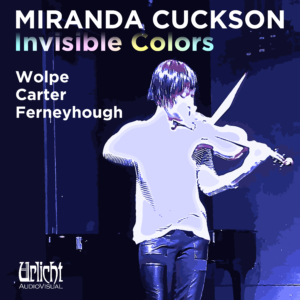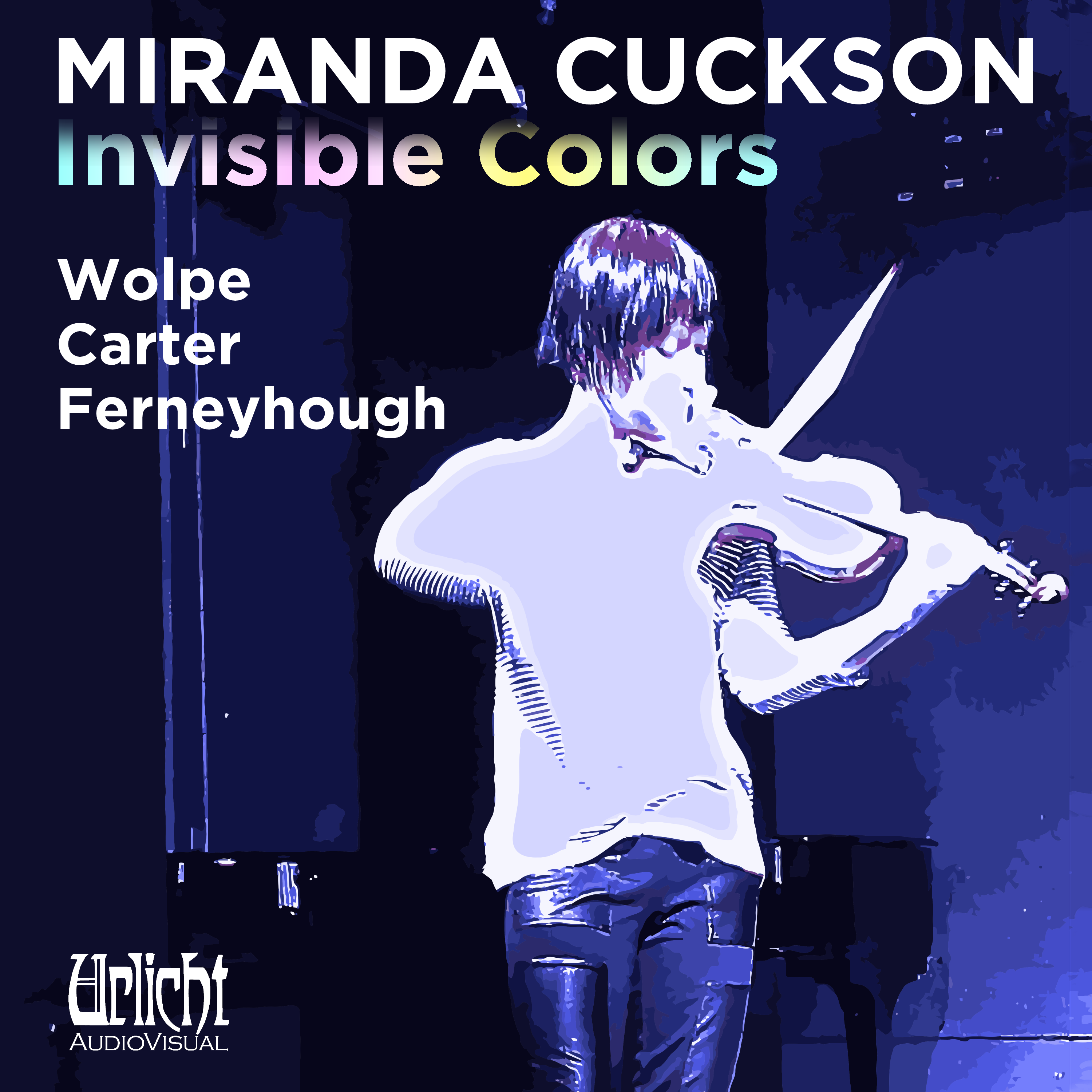
My new album on Urlicht Audiovisual is called “Invisible Colors” after Brian Ferneyhough’s piece “Unsichtbare Farben”. (I thought this sounded much more evocative than titling it after Wolpe’s “Piece in Two Parts” or Ferneyhough’s “Intermedio”.) If you google the words “unsichtbare farben”, you’ll see websites of German companies selling glow-in-the-dark paint. I applied some photo filters to the album cover to give the picture that sort of effect.
The album features five pieces by three composers: Ferneyhough, Elliott Carter and Stefan Wolpe. It will be released digitally on March 31, and available as CD. I’m playing a concert to celebrate the release on April 5, 7pm at National Sawdust, where the album was recorded. Hope you can come.
Ferneyhough’s pieces often involve such complex, dense textures and rhythms that performers, myself very much included, flail at executing them and this is part of the drama of the piece. I feel the qualities of hyperactivity and overload in much of his music reflect the modern state of the world, with its barrage of information, internet data, and connections. While I enjoy that barrage and effort toward mastery, I also became especially fascinated with his unusually spare, linear, and exquisite “Unsichtbare Farben”. The piece offers an opportunity to really absorb his phrase shapes, notes and harmonies, and I put a lot of care into giving it a particularly pristine interpretation. [See also his program note, which I discovered months after the album’s release.]
I’ve played a lot of Elliott Carter’s music, from the Duo and the Violin Concerto to the Triple Duo, Canon for 4, and other chamber pieces. I love the “character study” quality of the “Four Lauds” – depicting the banjos in Copland’s music, the brusque cut-offs of Robert Mann’s verbal declarations, the ornate style of Roger Sessions. I’m also drawn to the taut tension and unfolding of Carter’s intervals/harmonies, the long dramatic lines, and the back-and-forth between the gruff and the sweet and singing. Wolpe was a deep-thinking composer whose music is like mobile sculptures, with musical ideas taking up distinct pitch-space and interacting across irregular sections of time. He had a wide and impactful influence among both classical and jazz composers of his time. I enjoyed performing these two Wolpe pieces on a festival of his music presented by the Wolpe Society in New York.
